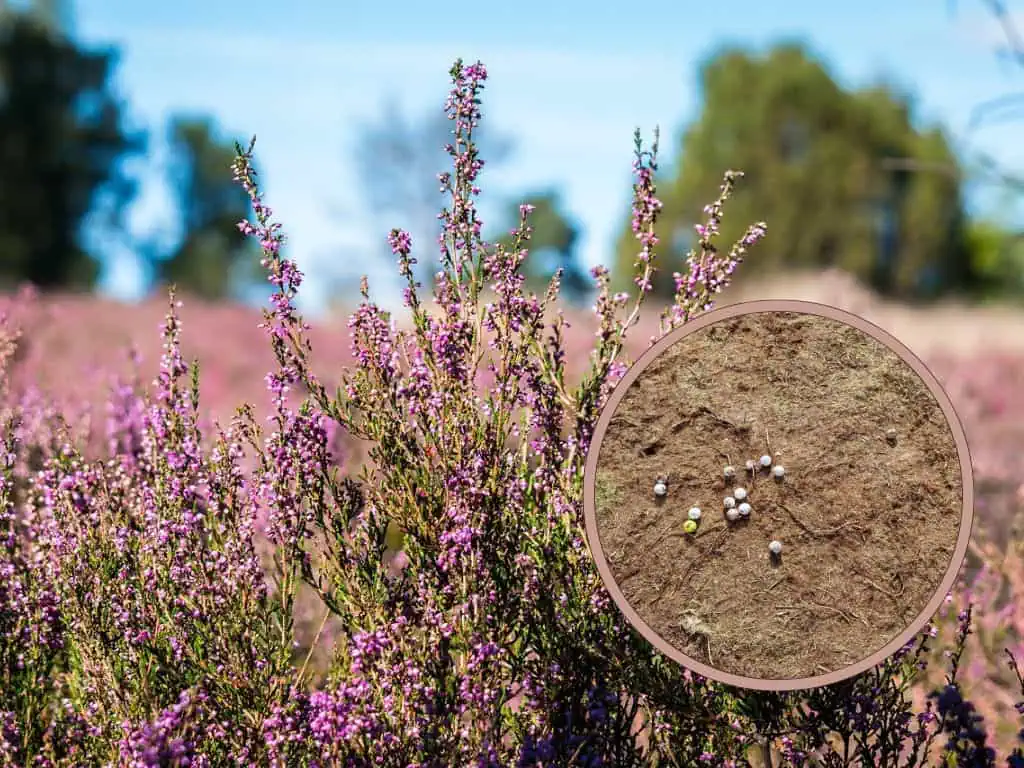Heath restoration: a case for experts
What looks so fascinatingly beautiful at first glance quickly turns out to be a problem for the golfer as soon as the ball disappears into it. The heath beyond the fairways proves to be unruly. Not only does the ball quickly disappear between the delicate leaves and flowers in an unpleasant way, but once it has been discovered, it is also difficult to play it out of the stubborn plant. Despite these problems, one thing is certain: heath and golf – it’s a special relationship. The combination stands for a special gaming experience. The plant is considered a distinctive feature of some of the world’s most famous golf courses. When the heather blooms at Sunningdale Golf Club in London, the experience for the golfer is impressive. Especially in the Surrey area in England, so-called heathland courses, i.e. courses with heather, are considered real classics.
New seeding on north German squares
The golf courses in Schleswig-Holstein may not be as famous or have quite as much history – but when it comes to heath, Germany’s northernmost golf association is well positioned and has a great deal of experience. Whether seed transfer, reseeding or maintenance of heathland – various clubs and their greenkeepers are active in all these areas.
Anyone who develops heathland needs patience, says Christian Steinhauser, for example, who sits on the board of the German Greenkeeper Association and has experience of developing heathland himself. “Seeded areas take up to five years to develop well. For the members, that often doesn’t look like much at first,” he says. Some clubs therefore opt for a mixed form – part of the area is planted with plants and part is sown.
The choice of seed is a difficult issue: it should be regional, the more local the better. The so-called seed transfer, in which threshed seed is purchased from heathland in one’s own region and then sown again in a neighbouring area, is the ideal case. The golf courses in Schleswig-Holstein also rely on neighbourly help here. This is how the small patches of heather that can now be seen on the fairways of the Golf Club Am Donner Kleve were created from the seeds of the GC Lohersand, which is regarded as Germany’s golf course with the largest area of heather.
At GC Gut Grambek, greenkeeper Christian Dunn is taking a different approach: the creation of heathland is currently being planned. In this case, the seeds come from a small airfield nearby, so it can be assumed that the plants will develop well in their new environment.
.
Once planted, the heather does not simply grow on its own. Rather, heathland requires maintenance, as the areas would otherwise become grassy or overgrown. Nutrient inputs from the air can also lead to the establishment of pipe grass or wire forge, for example, and displace the heather plants, mostly broom or bell heather.
In this case, the greenkeeping teams or volunteers from the membership are called upon to go into the heather areas in regular sections and pull out other larger plants. Weeding is the technical term for this time-consuming work. Landscape maintenance with heather sheep or goats also makes sense here, as these animals love to feed on the grasses or weeds between the heather plants.
The heather is rejuvenated at regular intervals, with the targeted burning of heather in particular being a tried and tested method. At this point, however, Hartwig Klein, head greenkeeper at GC Lohersand, shakes his head at the countless trees in the neighbourhood of the golf course. He prefers to mow down the heath, whereby countless balls appear, which often last for years. They are collected away, and the heath can develop anew.
The areas do not look pretty, which is why Klein makes a point of rejuvenating the heathland in different ways so that there are always large stands of fully developed heathland.
In principle, heathland is an important habitat that supports a high level of biodiversity. A large number of animal species are actually only found here – be it the golf eye spider, the ant wasp or the heather leaf beetle. For golfers, the insects are usually invisible to the naked eye. The dense vegetation of the heath provides a perfect hiding place – and not just for golf balls.









